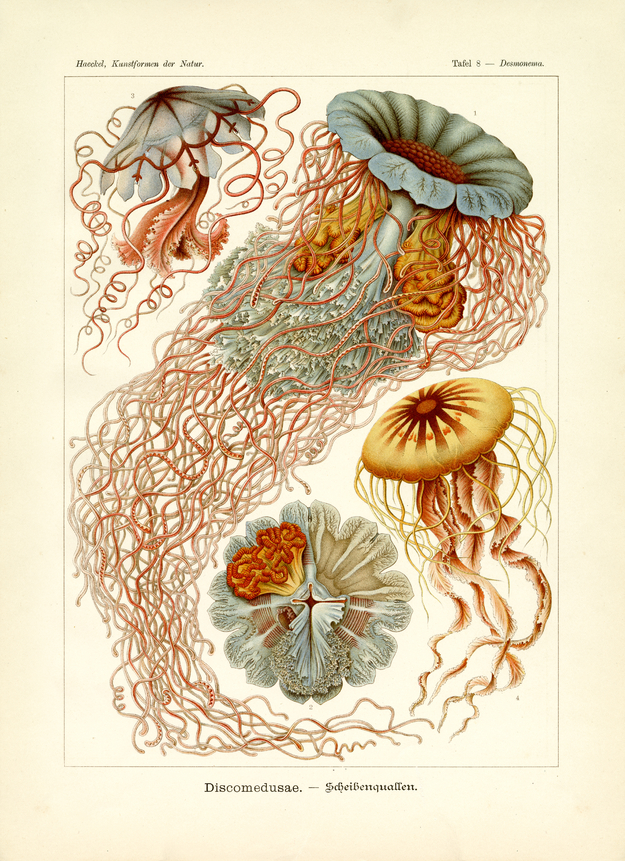Semostomae (jellyfish with four frilly arms hanging from the center of the umbrella) form a special suborder of Discomedusae, distinguished by the cleavage of the mouth into four impressive ‘mouth-arms’, often similar to a fluttering flag or a richly folded curtain. These tender ‘umbrella-medusae’, attracting attention with their tender shape and magnificent colouration, swim in huge groups at the surface of the ocean. The swimming movement is effected by muscles that spread along the lower area of the circular umbrella. At its border this umbrella or ‘swim-disc’ is split into 8-16 (at times 32 or more) ‘lobe-pairs’; in between the lobes of each pair sits a Rhopalium, composed of an eye, a ‘hearing-bubble’ and a ‘smelling-pit’. In between these, at the border of the umbrella, are sitting are sitting long flexible tentacles or ‘capturing-filaments’. The central stomach cavity is situated in the centre of the umbrella, with 8-16 or more ‘radiating ducts’ or radial bags running from here towards the border. In the centre of the lower area (Subumbrella) the stomach opens through the mouth; the four (perradial) mouth-arms surrounding the opening are very flexible. Four (interradial) gonads are located in between them.
Translation of the original German introduction by Ernst Haeckel:
Phylum of Cnidaria (Nesseltiere); - subclass of Acraspedae (Lappenquallen); - order of Discomedusae (Scheibenquallen); - suborder of Semostomae (Fahnenmündige).
Translation by VR Translators Bangalore
This is one of the 100 pop science biology illustrations that were published from 1899 – 1904 in Leipzig by Ernst Haeckel through Verlag des Bibliographischen Instituts.
We've scanned the original lithography at 1200dpi on the Epson A3 scanner of A3 scanner huren. You can download a 400dpi JPEG here.
